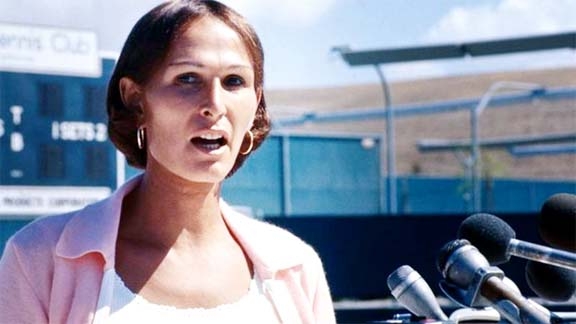
BBC Online :
“I had death threats. I had people who hated me. People told me I was immoral.”
Transgender tennis player Renee Richards was already proving to be a divisive figure when the level of scrutiny surged.
Shortly before the 1977 US Open, the 42-year-old American won a legal battle to compete in the women’s events, leaving her at the centre of a polarising story which made headlines across the world.
“Everybody had a reaction. They were either for her or against her,” says Britain’s Sue Barker, who played against Richards twice in her career and remembers her being booed off court during one of the matches.
“I was a supporter of Renee, I was one of the few in a way.”
The dissent from the sport’s rulemakers, which was backed by several leading players, centred on the belief the 6ft 1in Richards would dominate because of an unfair physical advantage over her rivals.
Others, even aside from those making the threats to her life, were less covert with their objections.
Wherever they were on the sliding scale of disapproval, their bottom line was Richards should not be allowed to play against the likes of Barker, Chrissie Evert and Martina Navratilova.
Richards, who was born in 1934, excelled in a range of sports, got married and started a family.
After graduating from Yale University, the affluent New Yorker trained to be an ophthalmologist, going on to specialise in eye-muscle surgery.
Combining a medical profession with an amateur tennis career, Richards reached the second round of the US Open men’s singles in 1955 and 1957.
“I had a very good and a very full life as Richard. But I had this other side of me which kept emerging,” Richards told the BBC in 2015.
Shaving her legs and wearing skirts while dog-walking allowed her to do what felt natural. But being born a man and living as a woman was not widely accepted in 1960s America, stigmatised and classified as a mental illness.
“I kept pushing back until finally it was not possible to submerge Renee anymore – and Renee won out,” she said.
In 1975, aged 40, she had gender reassignment surgery.
Initially, her plan was to move to California and start afresh in a place where nobody knew her.
But her previous identity was unveiled when she started playing amateur tennis tournaments, leading to a newspaper exposé, more headlines and an insistence from United States Tennis Association (USTA) officials that she could not compete in women’s tournaments.
“I never planned to play professionally as a woman. But when they said ‘you’re not going to be allowed to play’ that changed everything,” said Richards, who is now 86 and living out of the public eye in upstate New York.
“I told them ‘you can’t tell me what I can and can’t do’.
“I was a women and if I wanted to play in the US Open as a woman – I was going to do it.”

